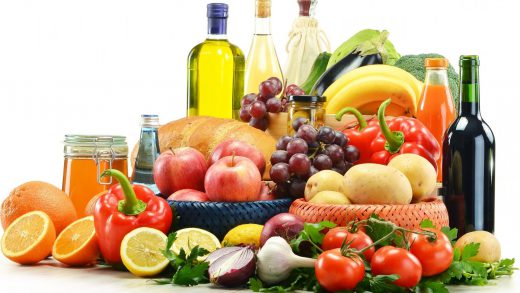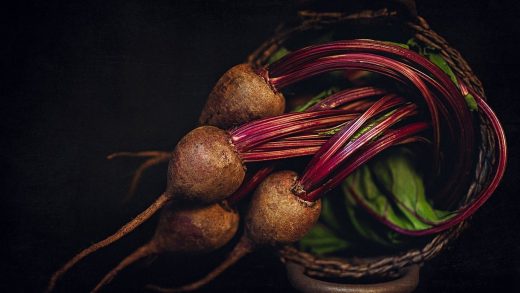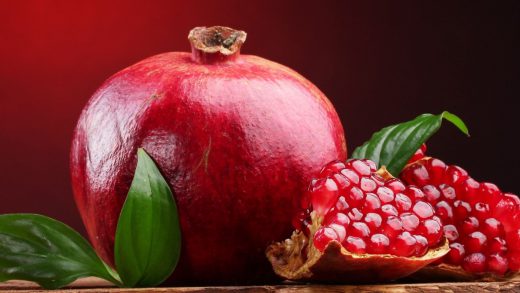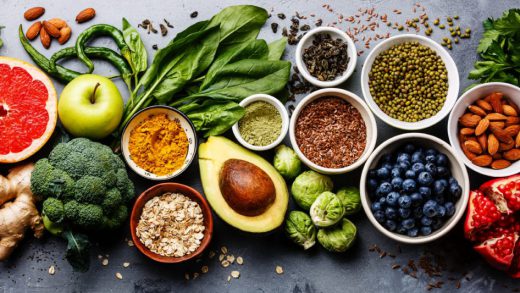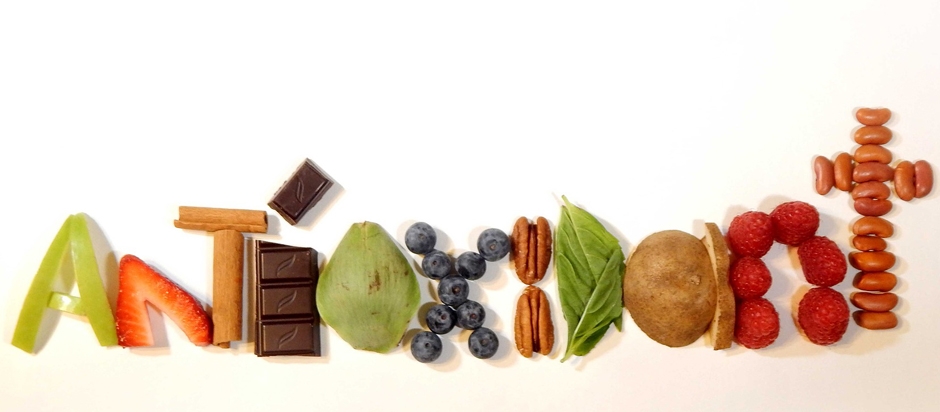
As we mentioned in our article on basic food groups, it is essential to consume Vegetables and Fruits for a balanced diet. We also stated that Fruit and Vegetables are rich in folic acid, vitamins E, C, B2, calcium, potassium, iron, magnesium, fiber and antioxidants. In this article, we will take a look at Antioxidant, which is one of the important substances contained in Vegetables and Fruits.
What is Antioxidant?
Antioxidant is the molecule that protects the body from “Free radicals”, which have a highly destructive feature. In living beings, chemical processes, especially oxidation, cause the formation of free radicals. Highly reactive free radicals can easily react with different molecules and thus damage cells.
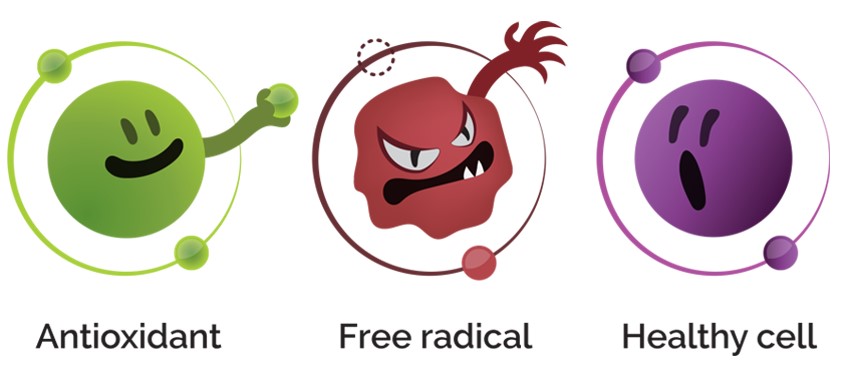
There are many types of antioxidants. While we get some of these substances in our diet (especially from plants), some of them are produced by the body itself as a defense system against free radicals.Antioxidants produced by the body as a defense against free radicals; enzymes such as catalase, glutathione peroxidase, and SOD (superoxide dismutase).We can specify the types of antioxidants we have received through Vegetables and Fruits as follows;
Anthocyanin: Anthocyanin, found in blue and purple vegetables and fruits, strengthens blood vessels. We can code anthocyanin as Red in the simplest way. It is high in red vegetables and fruits.
Resveratrol: Resveratrol, which is found in foods such as dark chocolate, red wine, peanuts and grapes, helps to reduce inflammation while supporting heart and lung health.
Isoflavone: Isoflavones, the estrogen-like substance found in plants, strengthen bone health, reduce joint pain and help relieve menopausal symptoms.
Lycopene: Lycopene, found in tomatoes, grapefruit, watermelon and red peppers, helps protect prostate and heart health.
Lutein: Lutein, an antioxidant found in spinach, brussels sprouts, broccoli, lettuce, artichokes and collard greens, supports the protection of eye and heart health.
Vitamin C: While vitamin C acts as an antioxidant, it also helps to increase the power of other antioxidants. Vitamin C is abundant in fruits such as red peppers, oranges, tangerines, citrus fruits and kiwi.
Vitamin E: While vitamin E is found in 8 different chemical forms in food, alpha-tocopherol meets the human body’s need for vitamin E. Vitamin E, found in sunflower seeds, almonds, flower oil and hazelnuts, helps maintain the normal functions of the body, while limiting the production of free radicals.
Selenium: Selenium, which is found in two different forms, organic and inorganic, can be obtained from different animal and vegetable sources. The strongest sources of selenium are brazil urchin, tuna, halibut and sardines.
Copper: Copper, both a prooxidant and antioxidant, is found in oysters, black beans, soybeans, and tomato puree.
Manganese: Manganese is a powerful antioxidant, just like copper. It is most commonly found in pecans, brown rice, pineapple and almonds.
Zinc: Zinc, which is necessary for the activity of nearly 100 hormones in the body, can be obtained from animal foods such as oysters and steaks.Iron: Iron, which prevents cell membrane damage, is found in foods such as white beans, dark chocolate, cocoa, and spinach.
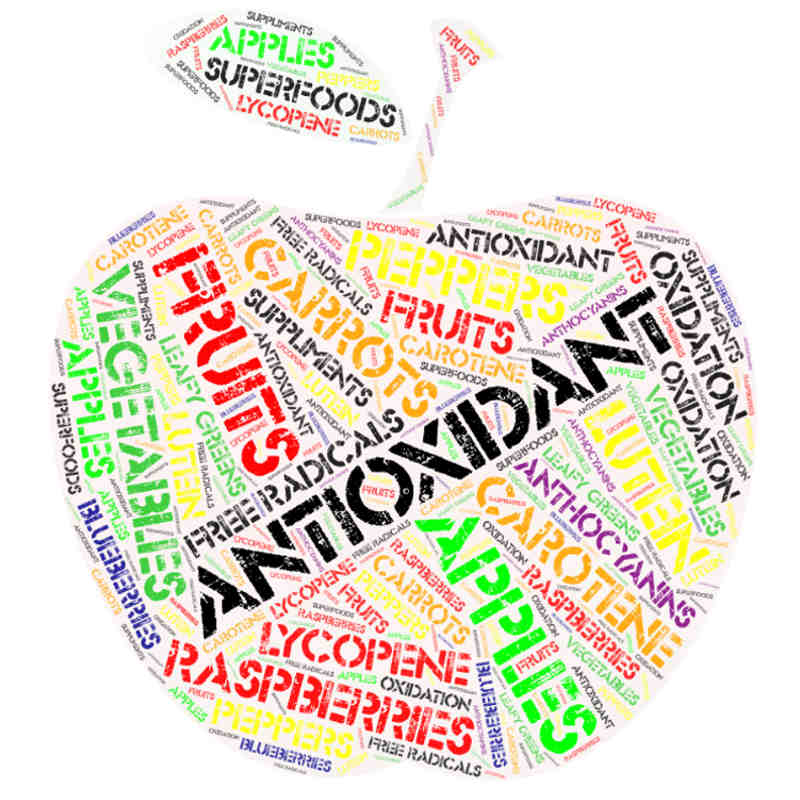
Antioxidant Rich Nutrition
While cooking foods reduces the amount of antioxidants in some foods that are antioxidant sources, it also strengthens the antioxidant effect in others. For example, when lycopene, which gives tomato its red color, is exposed to heat treatment, it becomes easier to process and use lycopene by our body.
On the other hand, studies have shown that foods such as cauliflower, peas and zucchini lose their antioxidant activity during the cooking process. At this point, it is important to include antioxidant-rich foods in your diet frequently and to consume them raw or cooked.
To increase antioxidant intake;
Make sure to include vegetables and fruits in your main and snack meals.
Consume a mug of green or black tea every day.
Eat colorful; If the food on your plate is predominantly brown, beige, or white, it means the antioxidant levels are low. Make room for red vegetables and fruits on your plate.
Increase the flavor and antioxidant content of your food by varying the spices with options such as turmeric, cumin, ginger, cloves, cinnamon.
Consume walnuts, almonds, hazelnuts, sunflower seeds, dried fruits along with fruits as a snack.


